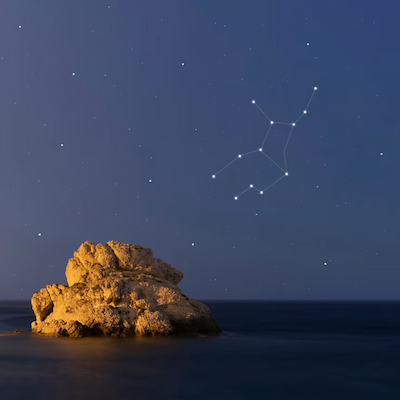
The universe is a vast ocean of mysteries, where each star shines like a beacon of knowledge waiting to be discovered. Among the most intriguing phenomena in astronomy are stars that, at first glance, appear to defy the laws of physics. This cosmic enigma not only fascinates scientists but also sparks profound reflections on the nature of the universe and our understanding of it. Studying these stars that shouldn’t exist is a journey that leads us to question everything we know about star formation and evolution.
What makes these stars so enigmatic? Many are observed in regions of space where the conditions don’t seem favorable for their formation, or they possess features that contradict current theories of stellar evolution. As astronomers delve deeper into this mystery, new theories and discoveries emerge, challenging logic and expanding our understanding of the cosmos. This article explores how these seemingly impossible astronomical phenomena work, the benefits of understanding them, and how we can unravel the mysteries surrounding stars that shouldn’t exist.
How Astronomical Phenomena That Defy Logic Work
Astronomical phenomena that defy logic are, at their core, an invitation to curiosity. To understand how they function, one must consider the complexity of the forces that govern the universe. Stars, for instance, typically form from clouds of gas and dust that collapse under their own gravity. Yet some observed stars seem to have formed under conditions that contradict this model, leading scientists to explore new possibilities and rethink existing theories.
One of the most intriguing aspects of these phenomena is the presence of extremely massive stars in regions where their formation is considered unlikely. These stars may have short lifespans, but their existence challenges the idea that stellar formation depends solely on the available material. The interaction of various forces, such as gravity and radiation pressure, may result in scenarios not yet fully understood. This invites the question of whether unknown factors might be at play.
Moreover, the discovery of anomalous stars in distant galaxies suggests that stellar evolution may be more complex than previously believed. Through the observation of phenomena such as supernovae and black hole formation, astronomers can study the conditions that might lead to the creation of stars that theoretically should not exist. These studies reveal a dynamic universe where new rules may apply.
Lastly, advanced telescope technologies and measuring instruments now allow scientists to observe these stars in unprecedented detail. Spectroscopy, for example, enables the analysis of light emitted by stars, revealing information about their composition and behavior. Through such observations, researchers can begin to piece together the puzzle of how enigmatic stars form, challenging established logic and expanding our cosmic understanding.

Benefits of Understanding the Universe’s Enigmas
Understanding the universe’s enigmas brings numerous benefits that go far beyond scientific curiosity. First, this pursuit can lead to significant advances in physics and astrophysics. By investigating phenomena that challenge current theories, scientists are driven to develop new models and approaches that may also be applicable in other scientific fields. This not only enriches our knowledge but can also result in unexpected technological innovations.
Another advantage is the ability to expand our understanding of how the universe formed. Studying stars that shouldn’t exist can provide insights into the conditions that prevailed in the early universe. This helps astronomers better understand how galaxies were formed and how they have evolved over time. Grasping these processes is key to answering questions about the origin and fate of the cosmos.
In addition, the search for answers to these cosmic enigmas encourages collaboration between scientists from various disciplines. Astrophysics, theoretical physics, mathematics, and engineering all intersect in the study of these phenomena, creating an interdisciplinary learning environment. Such collaboration not only enhances research quality but also helps train new generations of scientists who can bring fresh perspectives to the field.
Finally, understanding the mysteries of the universe can profoundly influence philosophy and how we perceive our place in the cosmos. As we unravel the secrets of the universe, we are faced with existential questions that may reshape our understanding of life and reality. This reflection can deepen our appreciation for the beauty and complexity of the cosmos, inspiring humanity to continue exploring and seeking answers.
How to Unravel the Enigma of Stars That Shouldn’t Exist
Unraveling the enigma of stars that shouldn’t exist is a challenge that involves multiple approaches and methodologies. First, astronomers must rely on advanced technologies to observe the cosmos in greater detail. Next-generation telescopes like the Hubble Space Telescope and the James Webb Space Telescope enable scientists to capture images and data that were once out of reach. This provides a new perspective on regions of space where such enigmatic stars are found.
Moreover, computational modeling plays a critical role in understanding these phenomena. Scientists can create simulations that replicate the conditions of the universe at different times and places, helping to predict how stars might form under various scenarios. These models may reveal previously unconsidered possibilities, enabling researchers to explore alternative theories of stellar formation.
International collaboration among research institutions is also vital. The exchange of data and expertise between scientists from different countries and fields helps advance the understanding of cosmic enigmas. Conferences and symposia are valuable opportunities to discuss recent discoveries and share ideas, fostering a collective learning environment that can accelerate scientific progress.
Finally, education and public outreach are essential for engaging audiences and inspiring a new generation of scientists. By making the universe’s mysteries accessible and understandable, we can spark interest in astronomy and space exploration. This not only benefits research efforts but also strengthens society’s connection to science, promoting a future where more people are motivated to contribute to the discovery of new knowledge.
How Unknown Stars Challenge Cosmic Theories
The existence of stars that shouldn’t exist forces scientists to reevaluate and often reformulate theories of star formation and evolution.
How Hidden Black Holes Influence Stellar Formation
The presence of black holes can alter conditions within a galaxy, affecting how new stars form and develop.
How Stellar Phenomena Reveal the Intriguing Mysteries of Astrophysics
Observing events like supernovae and gamma-ray bursts can provide clues about the fundamental physics governing the universe.
How Astronomical Phenomena Help Us Understand the Universe
Analyzing unknown phenomena not only sheds light on star formation but also helps us better understand the universe’s history and structure.
Understanding how these factors intertwine is essential for solving the mysteries surrounding stars that shouldn’t exist. Ongoing research and technological innovation are crucial in this process, allowing scientists to move closer to discoveries that could transform our view of the universe.

Enjoyed Learning About the Enigma of Stars That Shouldn’t Exist?
Exploring the enigma of stars that shouldn’t exist is a fascinating journey that compels us to rethink everything we know about the cosmos. These phenomena not only challenge current theories but also inspire us to seek new answers and expand our knowledge of the universe. The quest to understand these mysteries is a vital part of scientific exploration.
If you found yourself intrigued by these cosmic enigmas, know that astronomy is a constantly evolving field. Every new discovery opens the door to more questions and investigations, keeping the flame of scientific curiosity alive. Stay tuned to new developments in the field and discover how we can continue to uncover the universe’s most surprising secrets.
Frequently Asked Questions
What is the enigma of stars that shouldn’t exist?
It’s a mystery in space involving stars that are observed but shouldn’t be there according to current science.
Why are these stars considered an enigma?
They are considered an enigma because they don’t follow the known laws of physics. They might be brighter or larger than expected.
How do scientists study the enigma of stars that shouldn’t exist?
Scientists use telescopes and calculations. They observe the light from these stars to learn more about them.
What can we learn from the enigma of stars that shouldn’t exist?
We can learn more about how the universe works. It shows us there is still much to discover in space.
Can this enigma change our view of the universe?
Yes, it can! It could reshape how we think stars form and evolve.





